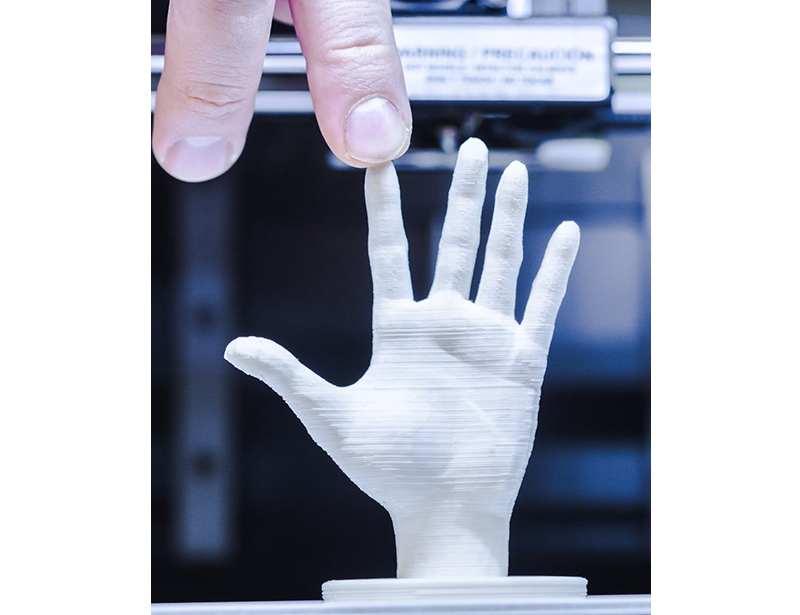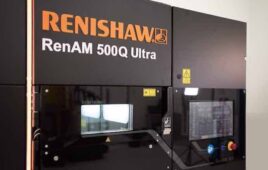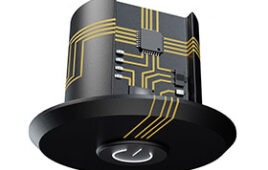The idea of creating a physical object from a digital file is fascinating. It conjures memories of the replicators in Star Trek that can create everything from clothes to starship components to different foods. Today’s 3D printing is making impressive strides in that direction, to the great interest of many manufacturers. It is now possible to print the components for sophisticated electronic devices with fairly simple equipment, for instance – as my research team has just shown by producing what we believe to be the first 3D-printed microphone.
It has become possible to 3D print with quite a range of different materials, including the likes of wood and silver. Most machines are restricted to synthetics, however, such as plastics, rubbery polymers and nylons. Machines usually only print one material at a time, or swap between a palette of two or three materials. But that still leaves plenty of potential, particularly by giving materials different properties. You do this by mixing in nanoparticles of another material that has the properties you are looking for.
If you want your printed material to be conductive, for instance, you add silver, gold or carbon nanotubes. This makes it possible to print electronic circuits. If you want to make a material piezoelectric – meaning it can generate an electric charge if squeezed – you might add barium titanate. This can be turned into a sensor for detecting things like sound or heat; or into an actuator, which is a device that makes other components move.
By swapping between circuits, sensors and actuators in a single print, you can create an entire working 3D component. People have been using this technique for the past few years to print things like optical components for, say, lenses or panels; and accelerometers – devices that measure the movement of everything from human running speeds to earthquakes. Likewise it enabled us to build our microphone, taking it from digital file to reality in just six hours.

Credit: Fabriksimf
Pimp your plastic
Ideally we would have used one of the popular MakerBot 3D printers, which start at below £1,000, but they don’t like it if you add tiny particles to your materials. They work by squeezing out a filament of plastic resin, which then sets when it cools, but nanoparticles tend to gum this system up – especially if you put in enough to make the new properties powerful.
Instead we used an Asiga Pico 27 plus, which costs over £6,000. It uses a system called digital light processing, where the plastic is solidified by exposure to ultraviolet light. The light is patterned by reflecting it off 4,000 digital micromirrors like the ones used in home film projectors. To make a model, you just project a series of 2D images onto the liquid plastic, moving the model slightly upwards every time a layer is solidified. The nanoparticles change the amount of exposure to the light that is needed by the resin, and tend to absorb or scatter the light, but once you’ve accounted for this, printing can go quite smoothly.
One drawback with digital light processing is that it’s not friendly to changing material types. Because the material starts in the form of a liquid resin, it has to be contained in a vat: the model is dipped into the liquid every time another layer is printed. To change the material, you have to stop everything and swap vats manually before starting again with the next image layer.
You can mitigate this by making a hole in your model at the place where you want to add a different material. You can then swap materials and overprint into the hole, which gives you a 3D-printed part with interconnected different properties.
Whatever next
The technical challenges of 3D printing a working microphone are largely in process control, timing the exposure of UV light down to the millisecond and carefully combining and mixing the different materials. The end result was a device that pretty much behaves as a normal microphone, except with a slightly poorer signal to noise level, and with a bit too much electrical resistance in the conducting layers. It wouldn’t be as good as the silicon-based microphone you would find in your smartphone, for instance.
Other people 3D-printing nanocomposites have come up against similar issues. When making the optical components or accelerometers I mentioned earlier, people have usually tried to get the best of both worlds by embedding pre-built microchips and sensors into printed parts or by modifying the plastic after it is built. We’re not at the stage where you would be able to print, say, a smartphone from scratch worthy of the name: the Samsungs and Apples are safe for a while yet.
Yet our current technical capabilities still open the door to some amazing possibilities – partly because good actuators are easier to print than good sensors. Welcome to the emerging field of soft robotics, where there is the potential to print hands that grip as softly and precisely as the human version; or nanobots that unpack themselves origami-style when they reach the relevant part of the body; or even full robots like this fish, which can mimic the complex motions of animals.
Prototypes of these things actually exist already, though still combining printed and non-printed components. A decade from now, they will likely be entirely printable. So just like the Star Trekkers of the 24th century, there’s no reason why you couldn’t soon select a file for many remarkable devices and print them to order. A soft robotic tentacle, you say? There’s not quite an app for that yet, but it’s only a matter of time.
Filed Under: 3D printing • additive • stereolithography, Product design




